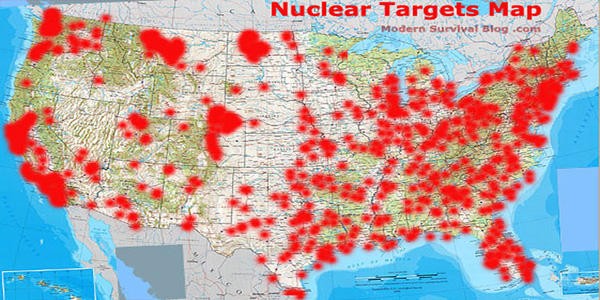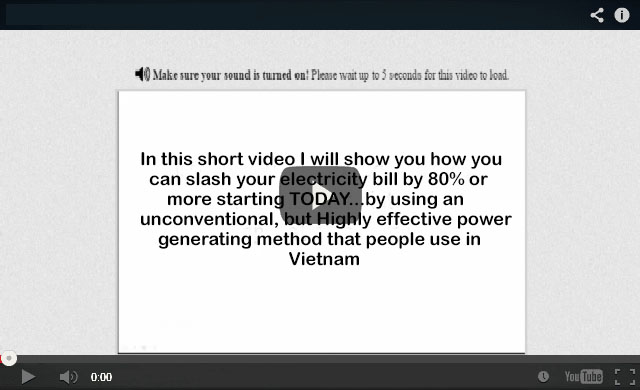When You Don’t Have a Nuclear Bunker
Nuclear war isn’t something a lot of people worry about these days. After all, the Cold War is over, right? Well, with what has been going on with Russia and the Ukraine over the past couple of years, it looks as though the Cold War is firing up again, not to mention the fact that terrorism is occurring at an accelerated rate across the globe. And then there is the threat of North Korea’s nuclear development, which if real, is something to concern us all.
With all of this going on around us, your world is not without the threat of nuclear war. What if one happened tomorrow? Would you be ready? Would you know what to do? While most people think it’s ridiculous to prepare for a nuclear war, what harm is there in it? If it doesn’t happen, then it’s no biggie, right? And if it does happen, then you will be a lot better off than everyone else. However, chances are you don’t have a state-of-the-art bunker set up in your backyard. How do you prepare if you don’t?
RELATED : How to Survive the First 24 Hours after the SHTF
The Dangers
The danger from a nuclear blast will depend on where you are when it hits. Most small countries and terrorist groups would be able to produce a nuclear attack of up to 10 kilotons, so it is best to plan for this at a minimum. Anyone at ground zero, where the fireball goes up, would be incinerated. There is simply no effective protection at ground zero. Up to ¾ of a mile away, anyone exposed would receive a lethal dose of radiation. Up to a mile away, anyone exposed would receive second-degree burns from the blast.
 Once you get beyond that distance, you have a better chance of survival. But you also need to take into account prevailing winds and wind direction and speed on the day. Here are some overall tips on the dangers of a nuclear blast:
Once you get beyond that distance, you have a better chance of survival. But you also need to take into account prevailing winds and wind direction and speed on the day. Here are some overall tips on the dangers of a nuclear blast:
- The size of the detonation will affect the amount of radioactive fallout, although the rate of decay is the same, regardless.
- Wind can carry radioactive fallout for hundreds of miles and a lethal dose can be carried as far as 6 miles. You should know whether you live in an area likely to receive fallout if a major target is hit. You can refer to Wikimedia Commons, which shows a fallout map published by FEMA.
- The height at which the device is detonated will affect the effect of the blast.
- If the device is detonated above the ground, it could result in an electromagnetic pulse (EMP), wiping out the power grid.
Major targets include:
- Military bases and strategic missile sites
- Centers of federal and state governments
- Critical communication and transportation centers
- Financial, technology, industrial, and manufacturing centers
- Electrical power plants, chemical plants, and oil refineries
- Major airfields and ports
If you are near any of these, your risk of death or exposure will increase significantly. The further you live away from large cities, military bases, and other targets, the safer you will be.
 Plan Ahead
Plan Ahead
First and foremost, you should plan ahead, so you know what to do if there is ever a nuclear attack near you. You must consider where you would go, who would go with you, how you would get there, and how to stock it ahead of time.
If you plan on evacuating, you need to be certain that you can make it to your bugout location. If you get caught out in the open, you risk being exposed to the fallout. If you can evacuate safely, don’t hesitate.
If you are staying, the most important thing to remember when protecting yourself from a nuclear blast is:
The more layers of heavy, dense material you have between you and the fallout the better. The best materials are:
- Steel
- Concrete or brick
- Earth
- Water
- Wood
For this reason, you need to get yourself somewhere that will offer you some protection. You can contact your city officials to see if there are any fallout shelters in your city. If so, you can head there, but if not, consider preparing your basement. Your basement automatically offers you some protection. In the basement of a two-story brick house you will receive 1/20th of the radiation as a person who is exposed outside.
Your Home
However, you can take measures to fortify your basement. Choose a corner of your basement and build a small room. Use any of the above materials to construct a second and even third wall inside your basement wall. Completely enclose the space. You can use concrete blocks, sand bags, and bricks. This will add additional protection and it is a space you can stock with whatever you will need for the time you must stay protected.
If you don’t have a basement, perhaps you live in an apartment building or your house has no basement, take the following into consideration:
- Choose the tallest concrete buildings you can get to within a few minutes.
- Go to the basement of the building, if possible.
- If you cannot get to the basement, then next best location is in the center of the building, halfway up and in the hallways, away from the sides of the building. You want as many layers of steel and concrete as possible between you and the outside.
- Stay inside for at least the first 24 hours (unless the authorities direct you to evacuate), during which the radiation levels will be at their highest (80% of the fallout occurs during this time).
- Be prepared to stay inside for as long as two weeks in areas that are the most affected by radiation.
If you go to a nearby building, you will only have a few minutes to get there before the fallout hits and you will need food, water, medical supplies, a source of light, a knife, and a radio at the very least. A crowbar is useful, too, in case you need to pry open doors to gain access to the building. Have these things packed and ready, so that when a nuclear emergency strikes, you can grab your bags and go.
Being prepared for a nuclear attack is the smart thing to do, especially with all the conflict going on in the world today. Plan ahead, so that you and your loved ones can survive a nuclear attack and help rebuild society. One day, you might be thanking your lucky stars you did.
There is still time for you to prepare, but you have to start learning how to make your own survival foods as soon as humanly possible. The best way to do it is to get the inside scoop on how to do it right. Fortunately, there is a way to get twenty years worth of The Lost Ways. This new food storage system is called The Lost Ways. You do not need a lot of expensive equipment to store foods for a crisis using the methods taught here. Even better, The Lost Ways pays for itself quickly as you begin to put away garden produce or even meats that you buy on sale. For most folks it’s simply the biggest bargain of their lives. You can finally become self-sufficient and any extra money saved in food expense goes right back to your pocket. Frankly, at the end of the day, The Lost Ways actually makes you money! What’s more, the videos take you by the hand, step by step, through the entire process of “putting away” almost any food you can think of. It’s very much like having a food storage professional right there with you every step of the way.
SOURCE : askaprepper
Other useful resources:
The Lost Ways (Learn the long forgotten secrets that helped our forefathers survive famines,wars,economic crisis and anything else life threw at them)
Survival MD (Best Post Collapse First Aid Survival GuideEver)
Backyard Innovator (A Self Sustaining Source Of Fresh Meat,Vegetables And Clean Drinking Water)
Blackout USA (EMP survival and preparedness)
Conquering the coming collapse (Financial advice and preparedness )
Liberty Generator (Build and make your own energy source)
Backyard Liberty (Easy and cheap DIY Aquaponic system to grow your organic and living food bank)
Bullet Proof Home (A Prepper’s Guide in Safeguarding a Home )
Family Self Defense (Best Self Defense Strategies For You And Your Family)
Survive Any Crisis (Best Items To Hoard For A Long Term Crisis)
Survive The End Days (Biggest Cover Up Of Our President)
Drought USA (Discover The Amazing Device That Turns Air Into Water)




yet another lame re-write of a civil defense article that appeared in Popular Science in the 1950’s….you are misleading your readers by letting them think they can survive a full nuclear exchange by building a cinder block bunker in their basement in the suburbs and lining it with scrap corrugated roofing panels.
why not solicit an up to date article about the realities of what will happen the first 3 days after a full on nuclear exchange, Prepper Fortress? There are qualified people you can solicit to write this…